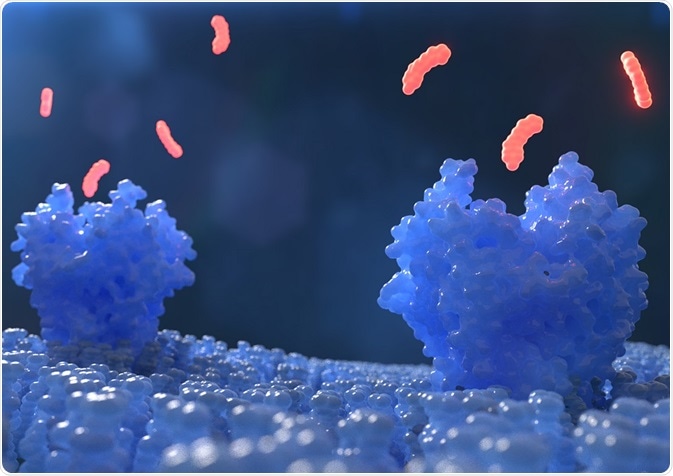The structure-activity relationship (SAR) aids in understanding various aspects of drug discovery, from screening drug candidates to optimizing their properties. The effective biological activity is contributed by the various geometric and electrostatic interactions.
 Image Credit: Alpha Tauri 3D Graphics/Shutterstock.com
Image Credit: Alpha Tauri 3D Graphics/Shutterstock.com
Why study the structure-activity relationship (SAR) of drugs?
The field of drug design now includes concise methods to determine SAR. This is because the geometric and electrostatic interactions involve the three-dimensional space of a target site and its ligand. Many of these interactions cannot be numerically characterized.
Understanding the interaction between a ligand and a target active site often requires abundant information and this is where SAR comes in. SAR can be used to explain various ways a ligand interacts with a receptor and can be used to optimize the ligands to develop specific and potent bioactive drugs.
Working with structure-activity relationships (SAR)
Working with SAR involves identifying if a structural activity relationship exists among a collection of molecules and whether the details of one or more SAR can be uncovered. Most optimization projects try to improve drug potency, reduce toxicity, increase bioavailability, etc.
Currently, there are hundreds and thousands of chemical series, and it often becomes daunting to identify potential candidates. In such cases, using in silico methods to rapidly characterize SAR can help to efficiently capture and encode specific SAR. Computational methods, rather than providing a replacement, offer a guide to integrate and summarise large amounts of data.
However, caution needs to be exercised when interpreting SAR data. While computational methods do help to identify, explain, and predict structure-activity relationships, they are ultimately models – therefore, misuse of these methods can cause misleading interpretation of results.
Capturing SAR
There are mainly two methods that are used to capture and quantify SAR: statistical or data mining method and pharmacophore models. The choice of quantitative SAR methods can determine the detail to which a SAR can be explored.
Statistical QSARs that is based on two-dimensional descriptors often miss elements of stereochemistry that are based on the chirality of the molecule. Thus, QSARs that are based on three-dimensional approaches provide more information and can recognize ligand-receptor interactions in greater detail.
Various predictive models provide information regarding the new molecules and their SAR; however, all predictions are not necessarily reliable. Thus, one way to test the reliability is to probe the “domain of applicability” of a model.
This parameter helps in understanding what are the exact conditions under which the predictions can be relied upon. Consequently, several methods have been developed to determine the domain of applicability of a model.
Applications of SAR
Pharmacokinetic studies
The pharmacokinetic approach entails studying the four steps of absorption, distribution, metabolism, and excretion (ADME) of a certain drug. The bioavailability of a drug is based on the absorption and metabolism of a compound.
The absorption depends on the solubility and lipophilicity and can be modified by the addition of alcoholic, acidic, or carboxylic groups. The high rate of metabolism, on the other hand, can reduce bioavailability. SAR can be used to determine the solubility, rate of reaction, metabolism, and other factors between drugs.
Drug-receptor interaction
The interaction between drugs and receptors occurs by reversible binding where weak ionic bonds may form between the drug and receptor. Another method is irreversible binding, as in the case of covalent bonds. SAR can be determined using various in silico methods that have been developed to understand the interaction between target receptors and drugs.
Modification of drugs
SAR method is extensively used to optimize and develop various types of drugs. The in silico methods developed using SAR include the statistical method, quantum analysis, artificial network modeling, validation method, etc.
Toxicity studies
The toxicity of a drug is critically linked to its dose. If the dosage of a drug is too high, it can cause toxicity, and if it is too low, it can lead to no or less activity. Thus, the minimum effective concentration of a drug is a rather important property, and this parameter can also be determined using SAR. Also, the lack of specificity of a drug can also lead to side-effects.
Formulation of chemical and physical properties
SAR has emerged as a great tool to understand and develop the chemical and physical properties of drugs. The structural information accorded by SAR can help in designing an organized approach to creating drugs that have desired potency and specificity.
Further Reading